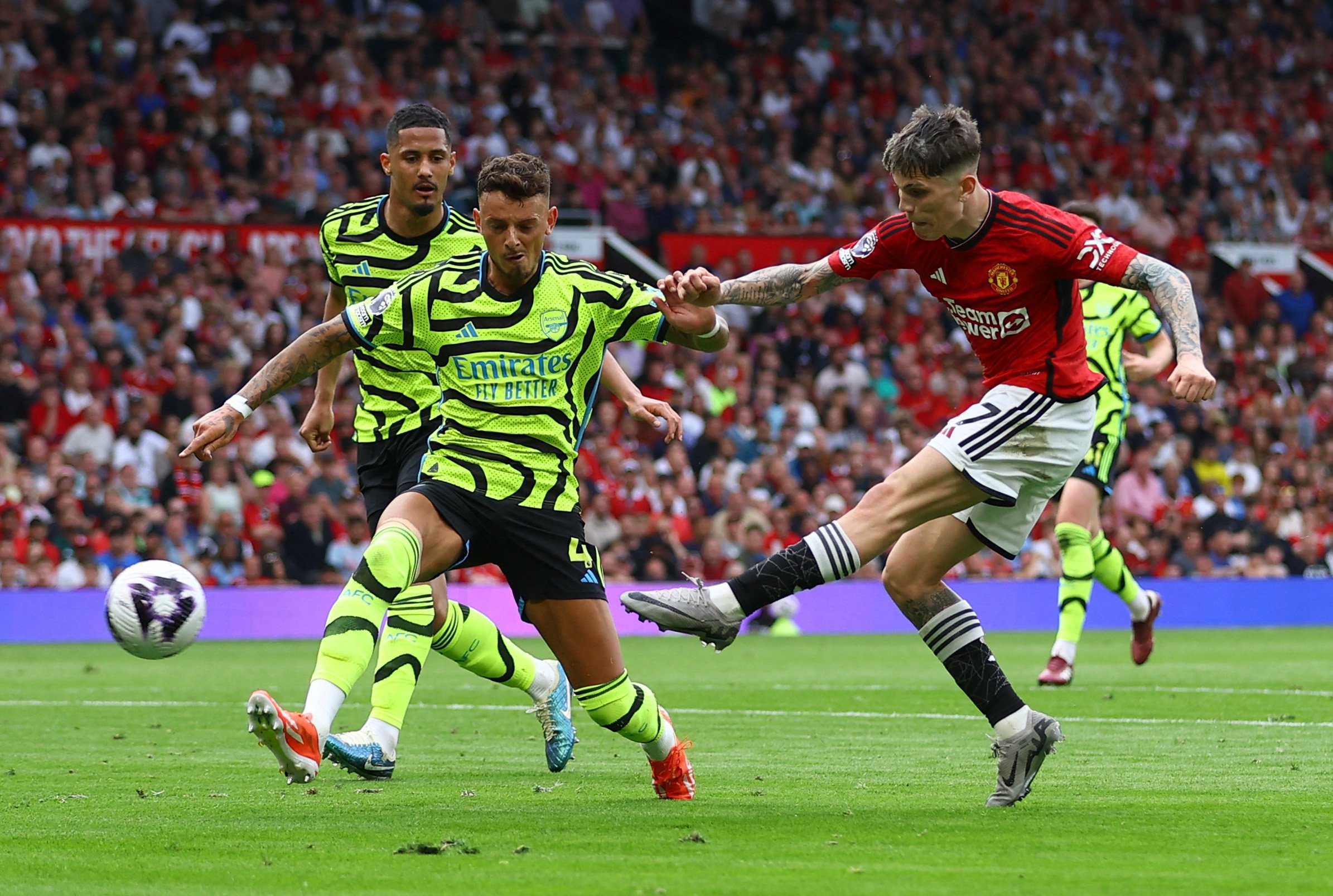These dolphins have orca 'friends.' They may have an ulterior motive.
A pod of Dall’s porpoises sped toward an adult orca, swimming under and around her for a few minutes before getting “bored” and moving on to her companions—a mother orca with a young calf. As soon as the porpoises appeared, the calf seems to have gotten excited, speeding up and trying to catch the porpoises. The mother eventually got frustrated, but “the calf looked like it was having a great time,” says Brittany Visona-Kelly, a whale biologist with Ocean Wise, a nonprofit conservation organization in Vancouver, Canada.
Eventually the mother’s annoyance boiled over into tail slaps on the surface of the water, but the porpoises didn’t pay much attention, hanging around for a few more minutes of play before taking off.
This playful moment, captured by drone, is just one of many such interactions between northern resident orcas, also known as killer whales; Dall’s porpoises; and Pacific white-sided dolphins off the coast of British Columbia.
These interactions may be the first known case of other cetacean species interacting positively with killer whales, apex predators of the ocean. Researchers believe the smaller species might be using the friendlier orcas as a shield against predatory orcas along the coast of British Columbia.
“The dolphins and porpoises seem to be attracted to northern residents,” Visona-Kelly says.
Northern resident killer whales are found from the northern part of Vancouver Island and up the British Columbia Coast into southeastern Alaska, overlapping with the ranges of Dall’s porpoises and Pacific white-sided dolphins. Northern resident orcas don’t have exclusive control over their range though—southern resident killer whales overlap parts of their southern range, while Bigg’s killer whales and other transient groups patrol up and down the coast. “[All three types of killer whales] are almost thought of as different species,” says Visona-Kelly.
In a study published recently in Ecology and Evolution, Visona-Kelly and her colleague Lance Barrett-Lennard analyzed 42 interactions between northern residents, Dall’s porpoises, and Pacific white-sided dolphins that they captured by drone between 2018 and 2021 in Johnstone Strait, between Vancouver Island and the British Columbia mainland.
These videos revealed dimly understood interactions that had previously only been observed by boat or shore.
In these encounters, the dolphins and porpoises actively approached the northern residents. The videos showed the smaller cetaceans swimming with the orcas in formation—sometimes all three species at the same time. Porpoises and dolphins would also play with orca calves, usually for a few minutes but occasionally for more than an hour.
Visona-Kelly and her colleague aren’t sure why the porpoises and dolphins did this, but they have a few theories. One possibility is they use the northern residents, which feed on chinook salmon, as a shield against Bigg’s killer whales that prey on other marine mammals, including porpoises and dolphins. Even though their ranges overlap, Bigg’s typically avoid northern residents, which usually travel in larger groups. While visually similar, Visona-Kelly says that dolphins and porpoises may differentiate from the two by picking up on the northern residents’ chatter—Bigg’s rely typically on stealth and are quieter. It’s also possible that these smaller species might just be trying to get a closer look at a less threatening predator so they know what they are up against if attacked by Bigg’s orcas, Visona-Kelly says.
“Like every animal, they live in a landscape of fear,” says Sarah Teman, a PhD candidate in marine mammal science at the University of Washington who was not involved in Visona-Kelly’s study. “So, it makes a lot of sense that dolphins and porpoises want to alleviate that for a bit by catching a ride with some bigger animals that aren’t going to cause them some damage.”
When traveling, both porpoises and dolphins are also known to ride the bows of boats, and they could be doing the same with northern resident orcas to surf off their current, Visona-Kelly adds. Finally, she notes, the smaller species may just be mooching food off orcas in some cases, though the videos didn’t directly observe that.
It’s difficult to say whether the orcas are deriving any mutual benefit from these episodes, Visona-Kelly says. Northern residents don’t usually share a diet with the smaller cetaceans, who eat smaller fish than chinook salmon. Visona-Kelly says it seems like the adults, at least, usually just tolerate the dolphins and porpoises, occasionally getting annoyed and lashing out at them.
Teman compares it to playing with a relative’s kids at a party. At first, it’s fun. But “eventually, you’re like, ‘I need some space.’”
On the other hand, Teman and her colleagues published a study on interactions between southern residents and porpoises—both Dall’s and harbor—and it doesn’t go nearly as well for the smaller cetaceans.
In these cases, it’s nearly always the orcas that initiate the encounter. They flipped porpoises out of the water or rammed them. While the orcas never ate them, they still sometimes killed porpoises in the process. They would sometimes also play a “game” in which two or three orcas would swim in unison, cradling a porpoise above the water between them. The fun was one-sided, however—stress from these whole interactions likely “did the porpoises in,” Teman says.
Amy Van Cise, a marine biologist at the University of Washington who was not involved in either study, is surprised how much the southern and northern residents differ in their behavior to porpoises. “Those two populations are right next door to each other and they have the exact same ecology,” she says. As far as she knows, Visona-Kelly’s study may be the first case of an animal seeking out killer whales for positive interactions. In many other cases, interaction with orcas tends not to end to well for marine creatures.
“It was nicer to see these northern resident killer whales have a little bit of a gentler interaction with these porpoise,” Teman says.










